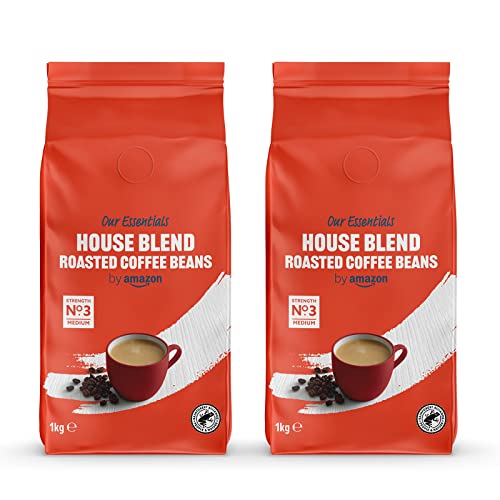Watch Out: How Coffee Beans To Buy Is Taking Over The World And What We Can Do About It

Where to Buy Coffee Beans
If you are a fan of whole coffee beans, your local independent roaster or coffee shop is the best place to purchase the beans. If you're not near the roaster, you can search online for companies that will roast and then ship your order.
Geography plays a huge influence on what coffee tastes like and so be aware of the origin of the beans you're purchasing.
Arabica vs. Robusta
There are more than 100 coffee varieties However, the two most commonly used are Coffea arabica and Coffea canephora (Robusta). Robusta is more resistant to drought, disease and pests. It can be planted at lower elevations and produces more coffee cherries every year. It is also less expensive to grow than arabica.
Robusta is responsible for 40% of the world's coffee production. Although a poor-quality batch might taste like burned rubber, a premium coffee made from specialty beans can rival Arabica's flavor. The issue is that with a few exceptions the majority of the robusta available on the market is from plantations who are focused on quantity.
The high caffeine content of the beans makes them resistant to disease and pests. This is what makes Robustas a favorite choice for traditional diner and instant coffee. However, although certain companies advertise their product as 100% arabica, they often mix it with other varieties of robusta to cut costs and offer their customers an unsatisfactory cup of coffee. Robusta can have a harsher, bitter and more grainy taste than arabica. It may also have an nutty, peanut or dark chocolate flavor. Some people find these flavors unpleasant or overpowering.
Origin
Coffee beans are actually seeds which grow inside tiny fruit that are colorful and sour, called coffee berries. These berries are pulled from the coffee plant when they are ripe and separated into two beans. The beans are then roasted and used to create our beloved drink.
Arabica is the most sought-after variety of bean in the world. They are renowned for their smooth, non-bitter taste. These beans are also known as complex and able to provide a variety flavors. coffee beans sale of cultivation for these beans are Africa, Central America and South America, where the conditions for a high-quality coffee are ideal.
They are generally a higher price tag than Robusta, due to the fact that they require more attention in order to flourish. They require specific temperatures and a sufficient amount of rainfall to establish their flavor profile. In reality, the best coffee beans on the planet originate from Africa, where many coffee farms are owned by family-owned farms, and operate at a micro level.
Aside from the region that is growing, another important factor to take into consideration when purchasing coffee is whether or not it's single origin. "Single Origin" can mean a variety of things but generally means that the coffee comes from one particular farm, or region within the same country. This is a large element of what makes third wave coffee so wonderful knowing exactly where your coffee came from lets you experience it in its purest form.
Grind

A good-quality brew begins with the finest coffee beans, but the process of grinding, brewing, and serving can alter the flavor of your beverage. You can find the perfect combination of coffee by experimenting with different grind sizes and brew techniques.
The size of the grind plays a significant factor in how the soluble coffee components are extracted from the grounds during making, and this affects the taste of your cup of coffee. If the grind is too coarse and water is unable to penetrate the grounds to extract the soluble coffee solids. This is called under extraction and can result in weak coffee. If the grind is too fine, the water flows through the grounds too quickly and undergoes an over extraction that results in bitterness.
You can purchase pre-ground coffee but it's recommended to purchase whole beans and grind your own beans as soon as you can before brewing. This will ensure that your beans are fresh and last longer than if you were to buy the pre-ground coffee.
A burr grinder is the best tool for creating an even grind, however you can also use a hand grinder, a food processor or a mortar and pestle. Burr grinders feature two cutting discs that break beans into a particular grind consistency by adjusting the distance between burrs. A smaller gap produces a finer grinding, while a bigger one produces a coarser grinding.
Storage
It is recommended to keep your bean bag tightly sealed and only grind the amount you'll need for the next coffee. You might also consider purchasing a resealable coffee canister, which will remove air and allow the CO2 off-gassing that happens when the beans are first ground to escape.
If stored properly If stored properly, whole bean coffee can last for up to one month. Once your coffee is ground, its quality will begin to diminish in just 30 minutes. This is why it's recommended to only grind the amount you'll need, and then keep the remainder of your beans in an airtight and opaque container.
You can pick from a wide selection of attractive and simple-to-use containers for storing coffee. Some are vacuum-sealed, which prevents moisture from entering. Some have a one-way valve that releases gasses that are produced by freshly roasted coffee, which can prolong the freshness of the beans.
The ideal place to store your unused coffee is in a cool, dark area with a stable temperature. Avoid storing your coffee near your stove or oven since the heat can speed up chemical reactions that destroy the coffee. Keep the beans out of direct sunlight will cause them to absorb the coffee and lose its flavor.
